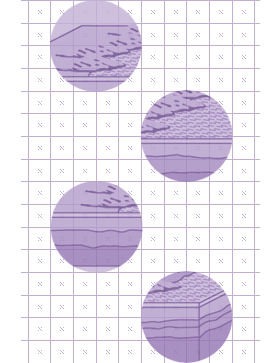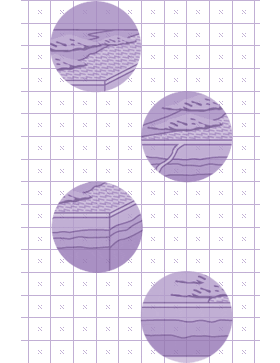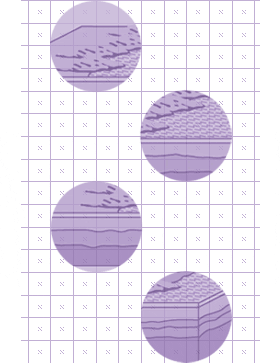|
|
About this InteractiveIntroduction | Goals | How to Use This Site | CreditsIntroductionDynamic Earth is an interactive Web site where students can learn about the structure of the earth, the movements of its tectonic plates, as well as the forces that create mountains, valleys, volcanoes, and earthquakes.The first section focuses on the layers that make up the earth — from the thin crust on the surface all the way down to the metallic core at the very center. Next, the interactive explores the concept of plate tectonics — the well-accepted theory that states the earth is broken up into about a dozen separate plates that are in constant motion. Students will learn the names of the tectonic plates and will be able to identify whether certain plates are moving toward, spreading apart from, or sliding past each other. Finally, students will learn how mountains and other structures and earthquakes and other major geological events are caused by the slipping, sliding, and colliding of tectonic plates. Learning about the earth is an important topic for students of all ages. Global warming is a pressing social and environmental concern; to address this problem, students must become informed citizens. The Dynamic Earth interactive presents science concepts that every student needs to learn to better understand forces within our planet. GoalsAccording to the National Science Education Standards, all students in grades 5-8 should develop an understanding of:
STRUCTURE OF THE EARTH SYSTEM
EARTH'S HISTORY
With these expectations in mind, the specific goals of Dynamic Earth are for students to be able to:
How to Use This SiteDynamic Earth consists of four sections and an assessment. Each section explores one aspect of the earth's structure and the movement of its tectonic plates. Simply follow the instructions on the screen to learn about the layers that make up the earth; how the continents arrived at their current locations; the constant movement of the tectonic plates; and the volcanoes, earthquakes, and other events that result from the movements of the plates.Students will view animations, read explanations, and use their mouse to drag and drop the earth's continents in their correct places, highlight features on a map, and cause earth's tectonic plates to move. At various points, students will check their knowledge by taking a quick quiz or playing a game to see how much they have learned about the Dynamic Earth. Students should read section introductions carefully, as they give a basic overview of concepts, and use the Glossary to look up definitions to unfamiliar terms. Using models of the earth's crust and making comparisons to familiar objects will help students retain the Dynamic Earth information. For example, students can bring in materials that resemble the earth's layers and build a class model of the earth as a way to make the information more concrete. Dynamic Earth includes an extensive assessment section designed to evaluate how well students have learned the interactive's content and skills. Multiple-choice questions, fill-in-the-blanks, and problem-solving questions are used to measure students' subject knowledge, and printable scorecards track progress. Technical Requirements
CreditsProduction CreditsDynamic Earth is a production of Thirteen/WNET New York. Copyright 2007, Annenberg Media. All rights reserved.Content Production: Ashlinn Quinn, Writer Ashlinn Quinn is an Outreach Producer in Thirteen/WNET New York's Educational and Community Outreach department, the LAB@Thirteen. She develops and manages educational outreach projects associated with PBS broadcasts. Recent projects have included producing a media-rich Web site for high school Global History teachers, WIDE ANGLE: "Window into Global History"; creating educational materials for the 2006 PBS broadcast series African American Lives; coordinating outreach events associated with the PBS news magazine program Religion & Ethics Newsweekly; and generating interactive online content for projects including the teen-oriented broadcast program What's Up in Finance and the animated kids' news Web site News Flash Five. Before joining Thirteen's Education Department, she worked first as a music teacher and then at the Peggy Notebaert Nature Museum in Chicago, where she wrote curriculum and conducted teacher professional development programs focusing on hands-on science. She holds a B.A. degree with dual concentrations in Music and Psychology from the University of California, Berkeley; and a M.A. degree in Sociocultural Anthropology from the University of Chicago. Interactive and Broadband Unit: Anthony Chapman, Director of Interactive and Broadband Anu Krishnan, Producer Shannon Palmer, Flash Programmer Lenny Drozner, Designer and Flash Animator Ying Zhou-Hudson, Graphics Production Brian Santalone, HTML Implementation Leslie Kriesel, Copy Editor
|
       |
|||